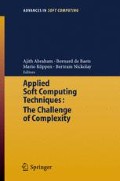Abstract
Autonomous mobile robots capable of intelligent behavior must operate with minimal human interaction, have the capability to utilize local resources, and routinely make closed-loop decisions in real-time based on sensor data inputs. One of the bottlenecks in achieving this is an often computationally intensive perception process. In this paper, we discuss a class of cognitive sensor devices capable of intelligent perception that can facilitate intelligent behavior. The primary emphasis is on achieving safe mobile guidance for planetary exploration by distributing some of the perception functionality to self-contained sensors. An example cognitive sensor, called the traversability sensor, is presented, which consists of a camera and embedded processor coupled with an intelligent visual perception algorithm. The sensor determines local terrain traversability in natural outdoor environments and, accordingly, directs movement of a mobile robot toward the safest visible terrain area in a self-contained fashion, placing minimal burden on the main processor. A cognitive sensor design approach is presented and a traversability sensor prototype is described.
Access this chapter
Tax calculation will be finalised at checkout
Purchases are for personal use only
Preview
Unable to display preview. Download preview PDF.
References
Bräunl, T. (2004), “EyeBot–online documentation,” The University of Western Australia, http: //www. ee.uwa.edu. au/~braunl/ey ebot/.
Clark S. M., Durrant-Whyte, H. F. (1997), “The design of a high performance MMW radar system for autonomous land vehicle navigation,” Proc. International Conference on Field and Service Robotics, pp. 292–299, Canberra ACT, Australia.
Dierauer, P. (1998), “Smart sensors offer increased functionality,” InTech, pp. 60–63.
Everett, H. R. (1995), Sensors for Mobile Robots: Theory and applications, A K Peters, Wellesley, MA.
Frank, R. (2000), Understanding Smart Sensors, Artech House, Boston, MA.
Giachino, J.M. (1986), “Smart Sensors,” Sensors and Actuators, vol. 10, pp. 239–248.
Goldberg, S. B., Maimone, M. W. and Matthies, L. (2002), “Stereo vision and rover navigation software for planetary exploration,” Proc. IEEE Aerospace Conference, Big Sky, MT.
Hebert, M. (2000), “Active and passive range sensing for robotics,” Proc. IEEE International Conference on Robotics & Automation, San Francisco, CA, pp. 102–110.
Howard, A. and Seraji, H. (2001), “Vision-based terrain characterization and traversability assessment,” Journal of Robotic Systems, vol. 18, no. 10, pp. 577–587.
Howard, A., Tunstel E., Edwards, D. and Carlson, A. (2001), “Enhancing fuzzy robot navigation systems by mimicking human visual perception of natural terrain traversability”, Joint 9th IFSA World Congress and 20th NAFIPS International Conference, Vancouver, B.C., Canada, July 2001, pp. 7–12.
Howard, A. and Tunstel, E. (2002). “Development of cognitive sensors,” NASA Tech Briefs, 26(4), p. 22.
Horn, B. (1986), Robot Vision, MIT Press, Cambridge, MA.
Maimone, M.W., Biesiadecki, J. and Morrison, J. (2001), “The Athena SDM rover: a testbed for Mars rover mobility,” 6 th Intl. Symp. on AI, Robotics & Automation in Space, Montreal, Paper# AM026.
Matthies, L., Balch, T. and Wilcox, B. (1997), “Fast optical hazard detection for planetary rovers using multiple spot laser triangulation,” IEEE International Conference on Robotics & Automation, Albuquerque, New Mexico, pp. 859–866.
Moore, H. J. et al. (1999), “Soil-like deposits observed by Sojourner, the Pathfinder rover,” Journal of Geophysical Research, vol. 104, no. E4, pp. 8729–8746.
Noor, A.K., Doyle, R.J., and Venneri, S.L. (2000), “Autonomous, biologically inspired systems for future space missions,” Advances in Engineering Software, vol. 31, pp. 473–480.
Passino, K.M. and Yurkovich, S. (1998), Fuzzy Control, Addison Wesley Longman, Menlo Park, CA.
Speissbach, A. J. (1988), “Hazard avoidance for a Mars rover,” Proc. SPIE Symp. on Mobile Robots III, vol. 1007, pp. 77–84.
Travis, B. (1995), “Smart Sensors,” EDN Magazine, Cahners Publishing.
Tunstel, E. and Howard, A. (2002), “Sensing and perception challenges in planetary surface robotics”, First IEEE International Conference on Sensors, Orlando, FL, pp. 1696–1701.
Tunstel, E. and Howard, A. (2003), “Approximate reasoning for safety and survivability of planetary rovers,” Fuzzy Sets and Systems, vol. 134, no. 1, 2003, pp. 27–46.
Wilcox, B. (1996), “Nanorovers for planetary exploration,” AIAA Robotics Technology Forum, Madison, WI, pp. 11-1–11-6.
Author information
Authors and Affiliations
Editor information
Editors and Affiliations
Rights and permissions
Copyright information
© 2006 Springer
About this paper
Cite this paper
Howard, A., Tunstel, E. (2006). A Self-Contained Traversability Sensor for Safe Mobile Robot Guidance in Unknown Terrain. In: Abraham, A., de Baets, B., Köppen, M., Nickolay, B. (eds) Applied Soft Computing Technologies: The Challenge of Complexity. Advances in Soft Computing, vol 34. Springer, Berlin, Heidelberg. https://doi.org/10.1007/3-540-31662-0_56
Download citation
DOI: https://doi.org/10.1007/3-540-31662-0_56
Publisher Name: Springer, Berlin, Heidelberg
Print ISBN: 978-3-540-31649-7
Online ISBN: 978-3-540-31662-6
eBook Packages: EngineeringEngineering (R0)

